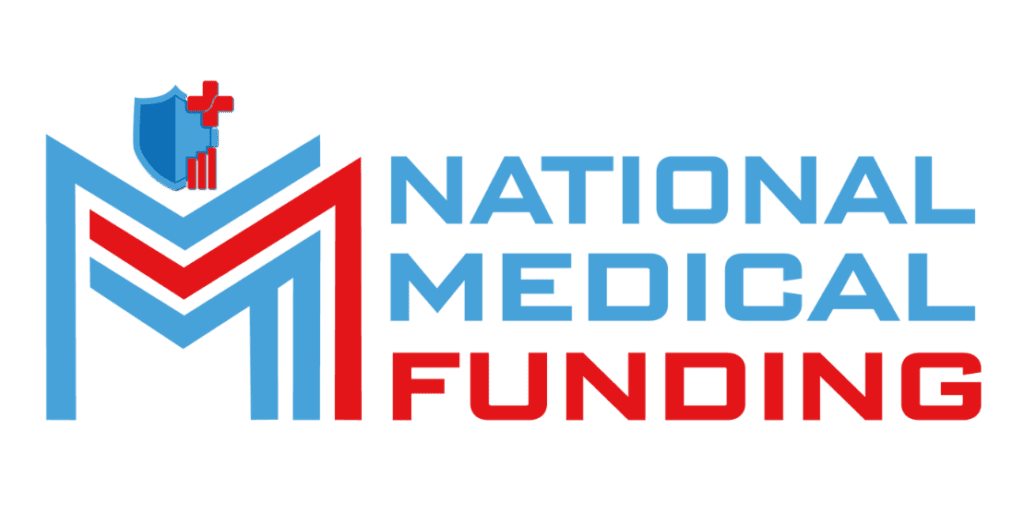
Financing Your Veterinary Practice Startup: A
Starting a veterinary clinic is one of the most rewardi...

Saturday and Sunday – CLOSED
support@nationalmedicalfunding.com



Running a medical practice often feels like a balancing act — caring for patients, managing operations, and dealing with delayed reimbursements from payers. These payment gaps can quickly disrupt cash flow, making it hard to cover day-to-day expenses. That’s where medical financing solutions and secure medical financing come into play. They help practices maintain financial stability, even when insurance payments or reimbursements are delayed.
Whether you’re a new clinic exploring medical practice startup loans or an established healthcare provider seeking to optimize operations, the right financial strategy can help you bridge the payer gap and ensure your practice runs smoothly.
The “payer gap” is the period between providing medical services and receiving payments from insurers or patients. While you’ve done the work and submitted the claim, reimbursements can take weeks or even months. During this waiting period, your cash flow tightens, and covering operational costs becomes challenging.
These delays can disrupt payroll, equipment maintenance, or supply purchases — all of which are vital to keeping your practice efficient. That’s why having access to secure medical financing gives you the flexibility to manage cash flow gaps without compromising care quality or financial stability.
When cash flow becomes unpredictable, it affects every part of your business. Delayed payments can slow down your ability to reinvest in staff training, upgrade technology, or pay vendors on time. Over time, this financial strain can hinder growth and damage your practice’s reputation.
Consistent cash flow is the foundation of a healthy medical business. It ensures you can focus on what matters most — patient care — instead of worrying about how to meet expenses. Reliable medical financing solutions act as a safety net, keeping your operations steady through these inevitable gaps.
Today’s healthcare environment is dynamic and fast-changing. Practices must adapt quickly to regulatory updates, patient expectations, and reimbursement models. However, even small delays in insurance payments can create big financial hurdles.
That’s why using tailored business loans for medical practice or short-term working capital options can help stabilize your financial base. When you have accessible financing, you’re not forced to delay critical decisions like hiring new staff or upgrading diagnostic equipment.
To learn more about how working capital can support your practice beyond day-to-day expenses, explore Beyond Equipment: 4 Strategic Ways Medical Practices Can Use Working Capital Loans for Growth.

Think of secure medical financing as a bridge that helps you move from uncertainty to stability. It gives you predictable access to funds, helping you cover payroll, pay vendors, and keep up with your practice’s ongoing expenses while waiting for payer reimbursements.
Unlike traditional business loans, healthcare-specific financing is designed with the unique challenges of medical practices in mind — variable patient flow, long billing cycles, and specialized operational needs. By using this type of funding, you can maintain your practice’s rhythm without financial interruptions.
Every practice has different financial needs, which means there’s no one-size-fits-all solution. Some may benefit from a medical practice startup loan, while others might need a line of credit or working capital funding. The key is understanding your financial cycle and choosing a solution that aligns with your cash flow patterns.
For instance, if your practice experiences seasonal fluctuations or reimbursement delays, a short-term business loan can fill the gap. Meanwhile, if you’re planning long-term growth — like expanding your facility or buying advanced medical equipment — a more structured loan might suit you better.
For a detailed breakdown of various loan types, check out Essential Guide to Business Loans for Your Medical Practice.
Many healthcare professionals view loans as a last resort — but in reality, strategic borrowing can be a powerful business tool. When used wisely, business loans for medical practice can help you invest in equipment, marketing, or staffing that leads to higher revenue.
For example, financing a new diagnostic machine or expanding patient services can increase your cash inflow, helping you offset payer delays. It’s about turning financial challenges into growth opportunities by using funds to make your practice more efficient and profitable.
Smart financial management isn’t just about surviving payer gaps — it’s about thriving despite them.

Every dollar borrowed should contribute to your long-term growth. That’s why it’s essential to assess the return on investment (ROI) of your financial decisions. For example, if you’re investing in new medical equipment, evaluate how quickly it can increase patient volume or improve service quality.
A thoughtful approach ensures your medical financing solutions don’t just solve short-term problems but also build long-term profitability. To explore how to measure these benefits, read Calculating the True ROI of Your Medical Equipment Financing.
By focusing on ROI, you make every financing decision count — not just for cash flow, but for sustainable success.
As a healthcare professional, your financial responsibilities extend beyond the walls of your practice. Managing personal and professional finances simultaneously can be overwhelming, especially when reimbursement delays affect both sides of your income.
Learning to balance these two aspects helps create stability. You can maintain your personal financial goals — like saving or investing — while keeping your business strong. If you’re looking for practical strategies, check out Smart Finance Tips for Healthcare Professionals Balancing Practice and Personal Finances.
Balancing both areas ensures that you stay financially secure — personally and professionally — regardless of cash flow fluctuations.
The best time to prepare for cash flow challenges is before they happen. A proactive approach allows you to anticipate payer delays and set up financial buffers that protect your practice.
Start by maintaining a consistent cash reserve and reviewing your financing options regularly. If your payer gap tends to widen during specific months, consider scheduling a medical financing solution in advance to ensure stability. This approach minimizes stress and keeps your operations uninterrupted.
By combining smart planning with the right funding tools, your practice can stay resilient — no matter how unpredictable reimbursements become.
Bridging the payer gap isn’t just about managing money — it’s about creating financial peace of mind. With the right medical financing solutions, your practice can maintain steady cash flow, invest confidently, and continue providing exceptional care without financial distractions.
By leveraging secure medical financing and business loans for medical practice, you ensure that delays in insurance payments don’t disrupt your growth or your ability to serve patients. Instead, you turn financial gaps into opportunities for improvement and expansion.
In today’s evolving healthcare environment, financial adaptability is your strongest ally. Build your strategy, use your resources wisely, and let stability fuel your practice’s success.
Starting a veterinary clinic is one of the most rewardi...
The Rise of ASCs — And Why Smart Funding Matters ...

Fuel your medical practice’s growth with financial solutions tailored to your needs. We’re here to support independent practitioners and group practices with strategies built for success.
Mon Fri: 8:00am – 6:00pm
Saturday: Closed
Sunday: Closed
Copyright © 2025 National Medical Funding